A Day with the Huawei Mate 30 Pro: Kirin 990 and 7680 FPS Slow Motion Tests
by Dr. Ian Cutress on September 23, 2019 4:00 AM EST- Posted in
- Smartphones
- Huawei
- Kirin 990
- Mate 30 Pro
- 7680fps
Daylight Photography Hands-On
One of the benefits of being a photography luddite is that the quality of smartphone cameras, both the hardware and the software, has come on leaps and bounds over the last decade. Smartphone photography is something that new entrants to the smartphone scene have difficulty on, because the main players are on their ninth or tenth generation of AI-accelerated photography features. If you are new with your first/second generation device, it is hard to play catch-up. But for today, Huawei is one of the companies leading the scene in computational photography.
For my short photography test, I’m pitting the Huawei Mate 30 Pro against my trusty P30 Pro. I also have the ROG Phone II here for an upcoming test, so I’ve thrown that in as well. I took seven day-time scenes from a trip to compare and contrast. All three phones are running in Auto mode, taking 10/12MP shots with pixel binning, with AI enabled.
Position 1: A Church
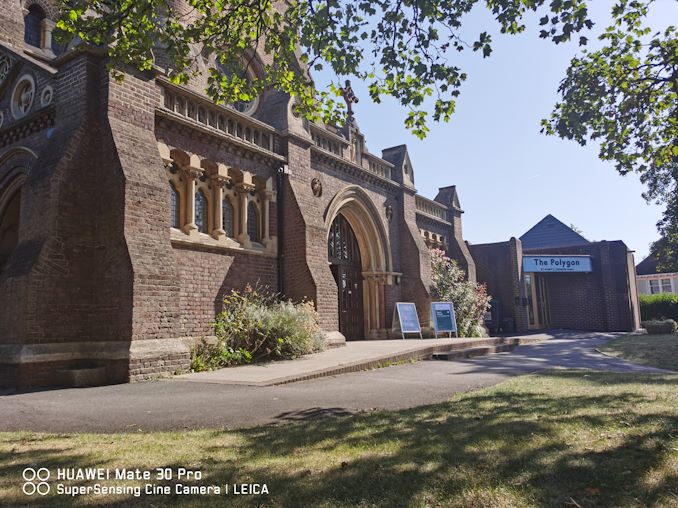

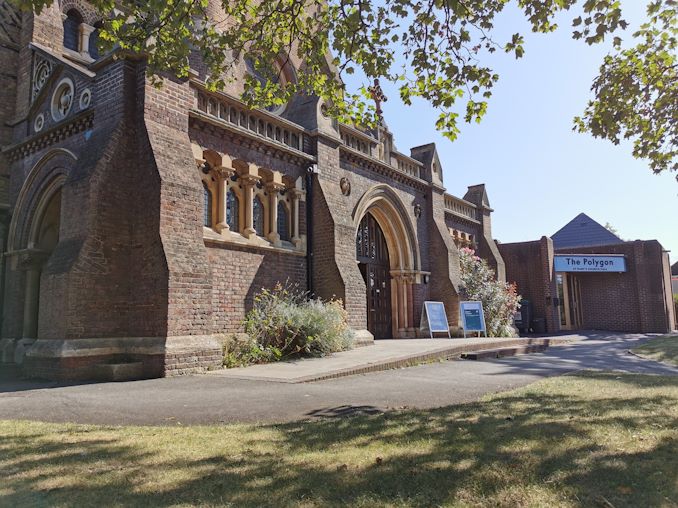
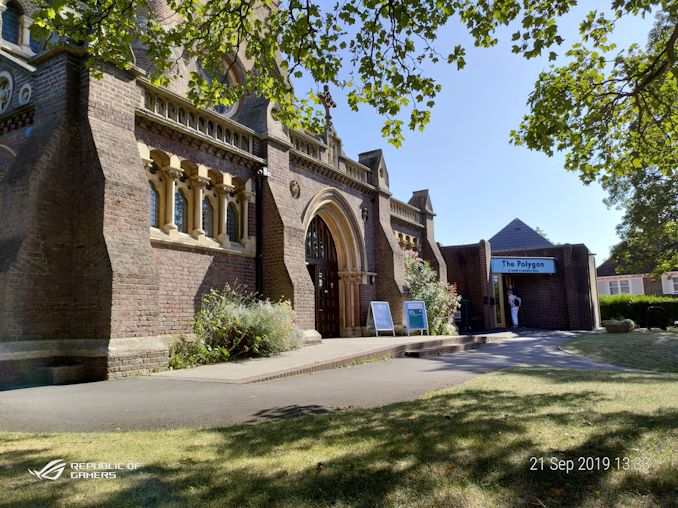
Mate 30 Pro | P30 Pro | ROG Phone II
Here we can see that the Mate 30 Pro is a little hazier around the words on the right, but the bricks on the wall of the Mate 30 Pro have a lot less noise on them. The ROG Phone II darkens the shadows quite a bit, whereas the two Huawei phones blend the scene a lot better.
Position 2: Clock Tower
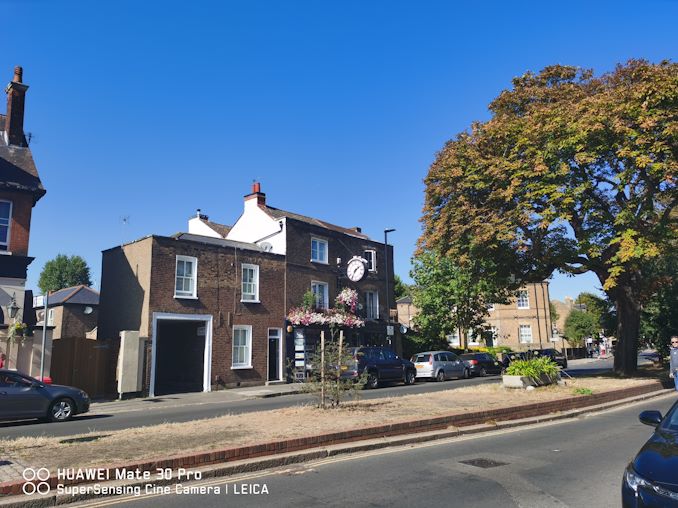

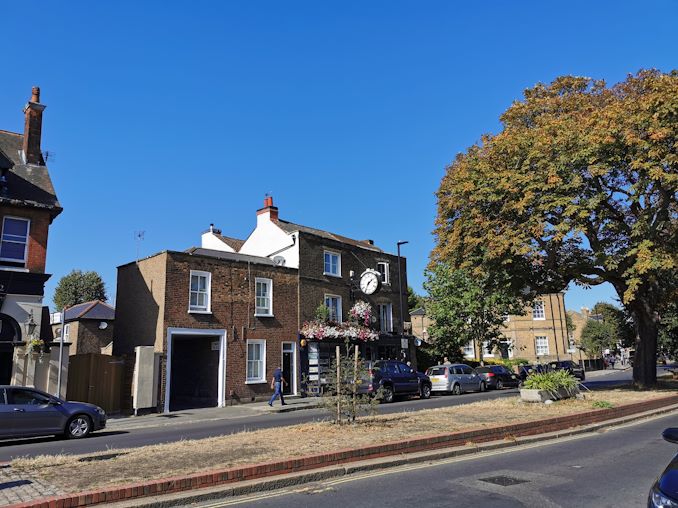

Mate 30 Pro | P30 Pro | ROG Phone II
In this instance the P30 Pro is darker on the brickwork than the Mate 30 Pro, however the Mate 30 Pro is a bit more hazier with less detail. Both phones used ISO 50 for this one, with the Mate 30 being at 1/4219s shutter speed compared to 1/3425s.
Position 3: Ealing Studios
This photo had a slight angle towards an incoming sun, to give a more difficult scene.
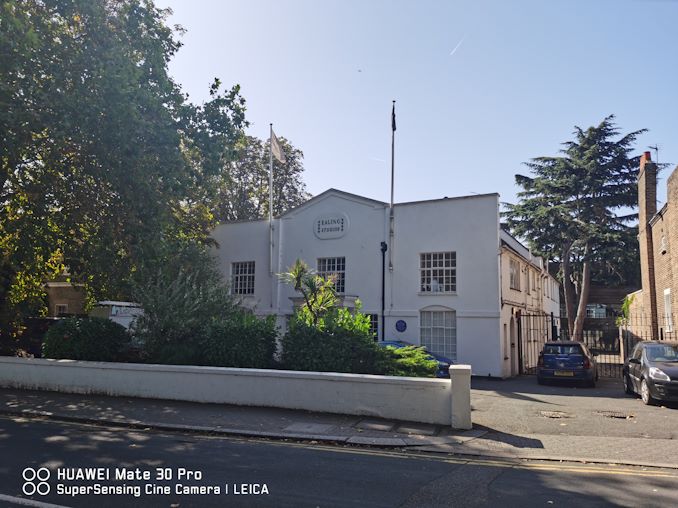

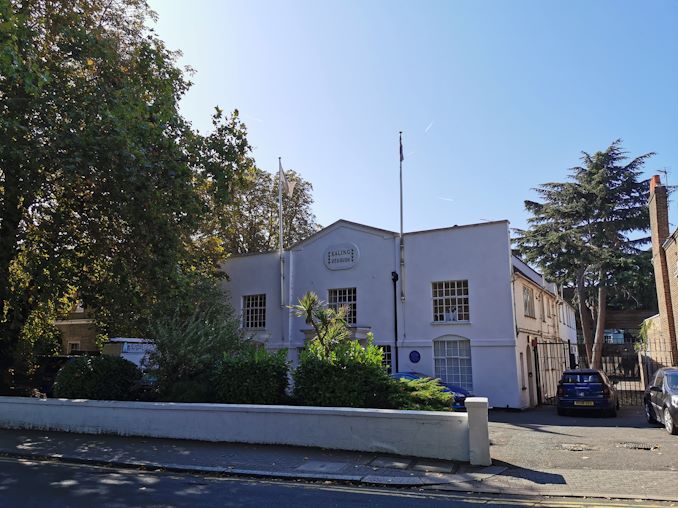
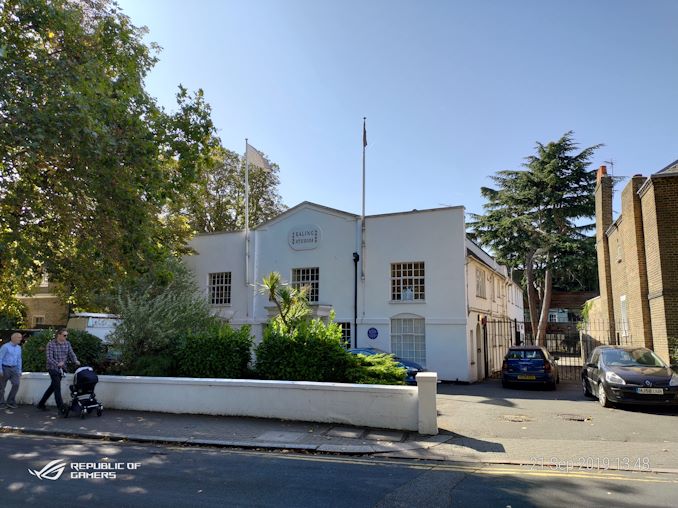
Mate 30 Pro | P30 Pro | ROG Phone II
Again we see that on the P30 Pro, compared to the Mate 30 Pro it is a little darker and in this case the building looks a lot bluer as a result. The sidewalk on the P30 Pro also looks blue, but on the Mate 30 Pro is truer to the real color.
Position 4: Macaroons
The artificial light here gives an interesting perspective – all three phones typically refresh at 60 Hz, but with the UK on its 50 Hz lighting system combined with a rolling shutter means that we get those wavy lines across the screen. Most modern smartphones now have a way of dealing with this, by detecting the light differential and synchronizing up. It still takes a good 5 seconds or so for the detection to work and kick in, however.
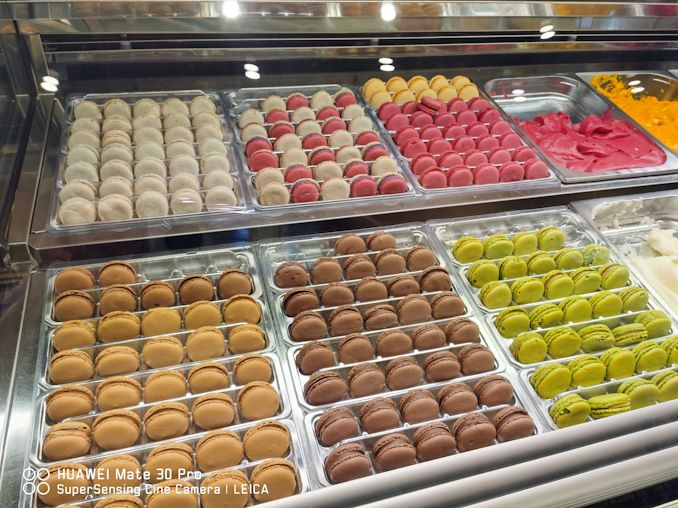

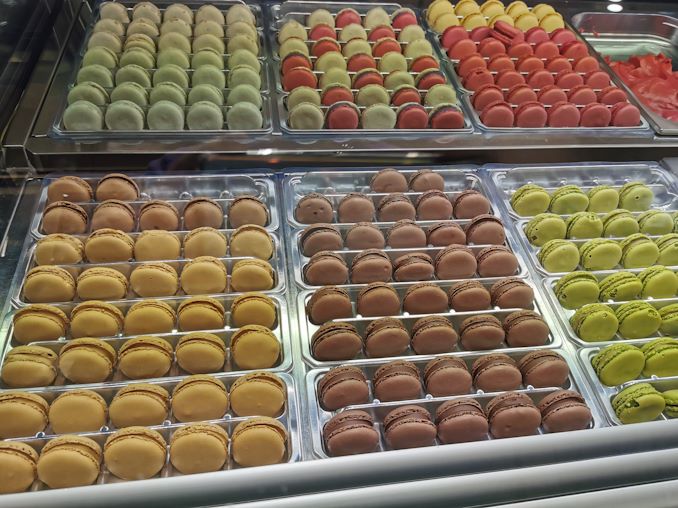
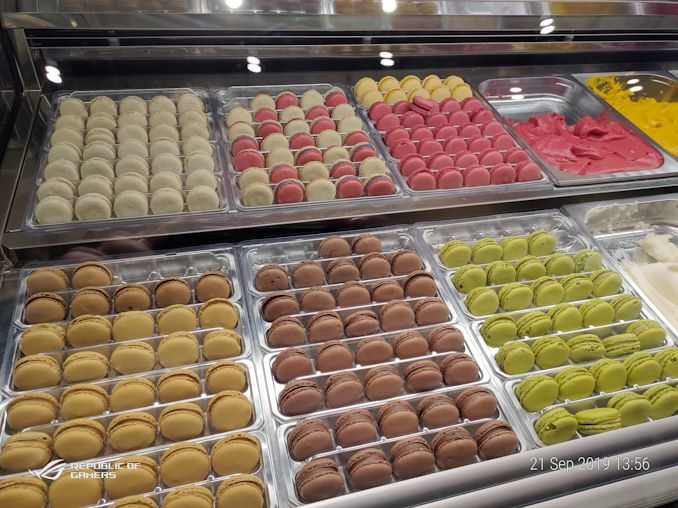
Mate 30 Pro | P30 Pro | ROG Phone II
The Mate 30 Pro makes the colors pop a bit more than the other two, but again we are getting some haziness in the camera and a lack of edge clarity in the distance or even on the yellow macaroons near the front.
Position 5: Ice Cream



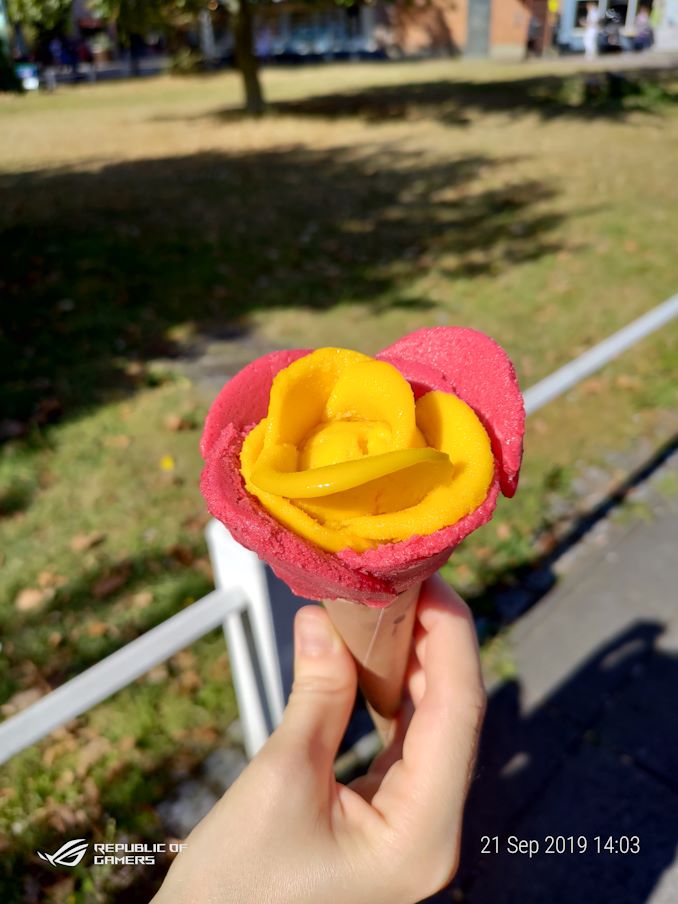
Mate 30 Pro | P30 Pro | ROG Phone II
This is more of a close up shot, and again we see the Mate 30 Pro make the colors seem more vibrant, but still a haziness in the image. I wonder if this is the bokeh going into overdrive. Impressively I prefer the ROG Phone II in this shot, as the picture is very clear and crisp.
Position 6: Shopping Center
This photograph was taken under shade in an open-air shopping mall, with Christmas lighting all strung up and ready to go. We have the sun coming in from the right, shining on a set of walls but leaving a lot of the shot in the shade.



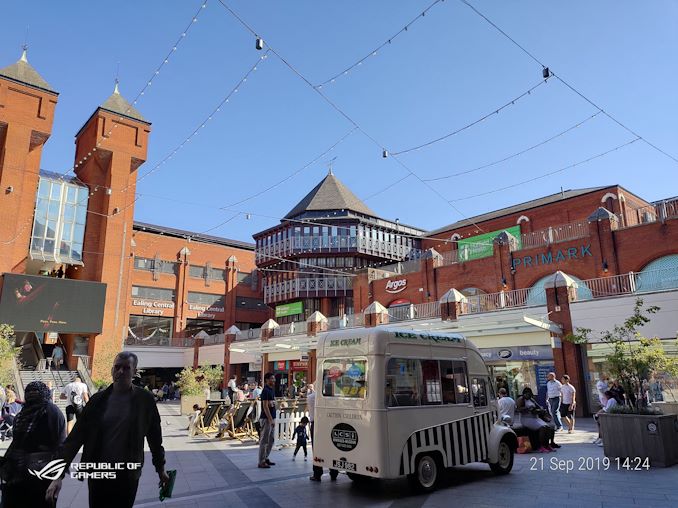
Mate 30 Pro | P30 Pro | ROG Phone II
For another scene, we have the P30 Pro being sharp, while the Mate 30 aims for more vibrant colors. In both cases, the floor is made very blue, whereas the ROG Phone, while not the most color vibrant shot, is probably the most true-to-life in most of the scene. Where the ROG Phone II falls short is the hanging lights, which both the Huawei’s depict quite clearly.
Position 7: Horse Statue
Another close up, this time of the shady side of a horse statue with the background containing a variety of Christmas lights.


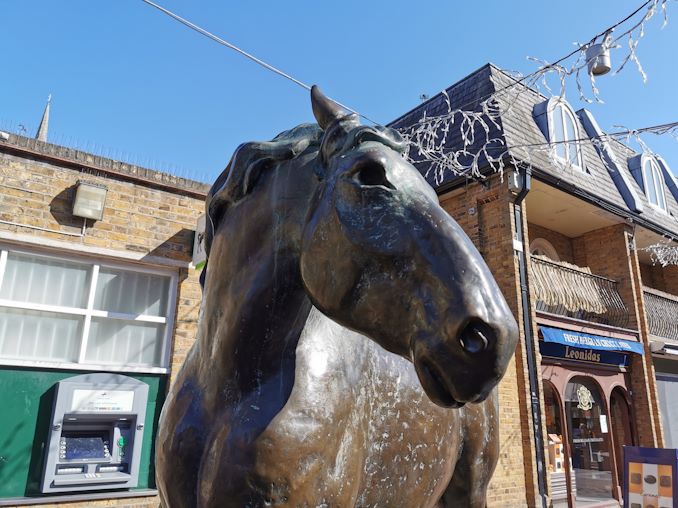
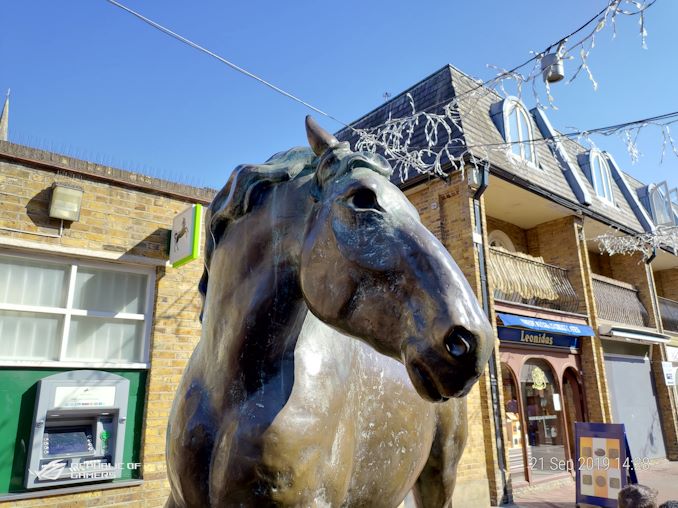
Mate 30 Pro | P30 Pro | ROG Phone II
With the Mate 30 Pro again being hazy in the periphery, this does seem down to an over-active bokeh implementation. The shadows and marks of the statue are easier to make out on the P30 Pro, which actually feels the most true-to-life out of the three shots. The ROG Phone II here seems to add an AI filter here that doesn’t work, causing some miscoloration and a lot of blur on the Christmas lights.










47 Comments
View All Comments
pberger - Monday, September 23, 2019 - link
I'm more impressed with the 76'206 AI-Benchmark score of this phone thanks to the new NPU more than twice more performant than the 980 one.Now how this can be compared to desktop GPU scores? Any link?
designerfx - Monday, September 23, 2019 - link
", the bottom left is a 40MP f/1.6 camera with OIS, and the bottom left is an 8MP f/2.4 telephoto camera and lens, also with OIS."might want to specify which bottom left, apparently - or fix your typo
eastcoast_pete - Monday, September 23, 2019 - link
Thanks Ian! Question: how is the reception and call quality of the phone? While I use my smartphones for all kinds of other things, my smartphone is also my main phone, and I had some otherwise good smartphones fail at being good at that - making phone calls. Any impressions?saru44 - Tuesday, September 24, 2019 - link
I am really upset with the direction the smartphone reviews are going! They have so many advanced tools and benchmarks to test the display, processor etc, but they outright skip the most important aspect of a phone to many people - Telephony. There is nothing in the reviews about call quality, ear piece volume levels/ clarity, network reception quality inside buildings/ poor network coverage areas, microphone quality (how good the person sounds to the caller on the other side), etc.. Just nothing!peevee - Tuesday, September 24, 2019 - link
"This does one of two things. Firstly, it affects how we change the volume, as there is no volume button control. In order to adjust the volume, the user double taps on the edge of the display, and the volume pop-up allows the user to swipe up and down, using a thumb on the edge of the display, to adjust the volume"Meaning that:
1) There is no rim, so placing the phone display down will scratch the glass with a grain of sand etc
2) a case cannot protect the sides of the phone as that would disable volume adjustment function.
3) You cannot adjust volume by feel in your pocket/phone holder without taking it out and turning on the screen first.
Stupid designs are stupid.
s.yu - Tuesday, September 24, 2019 - link
I noted the volume issue at GSMA, I said that if the rumors are true (which they turned out to be), then the volume implementation would be a total gimmick. NEX3 has a highly similar screen yet their volume is pressure based, which is compatible with a case.peevee - Tuesday, September 24, 2019 - link
"At 256x however, the video is also 32 seconds, meaning that the sensor can only record 0.125 seconds of video."Useless. Typical reaction time is over 0.3s. Way more when a person is tired. Nobody can catch the event lasting 0.125s.
Somebody needs to start prosecution for false advertisement.
peevee - Tuesday, September 24, 2019 - link
The resolution in the high-fps video is not 720p either, it looks like 160p. Looks like they "interpolate" not just frames but pixels in the frame. All while advertising high fps and high res. Fraudsters.s.yu - Tuesday, September 24, 2019 - link
Wow I was thinking 360p, 160p is.........I think they read out more than that, but it could be a little harder to test, you'd need something flying by at high speed on basically the same plane as an MTF chart.Or have the MTF chart flying at high speed, which is even harder.
Or have the phone fly by the MTF chart at high speed while keeping a constant plane of focus, which sounds equally as hard as the flying MTF chart.
s.yu - Tuesday, September 24, 2019 - link
...However, one could shoot the same scene with the slo-mo 720p, and with a regular 60fps 720p, and see if there's a notable degradation in resolution. If the degradation approaches what the video looks like downscaled to 360p then upscaled back, then it suggests fraud.